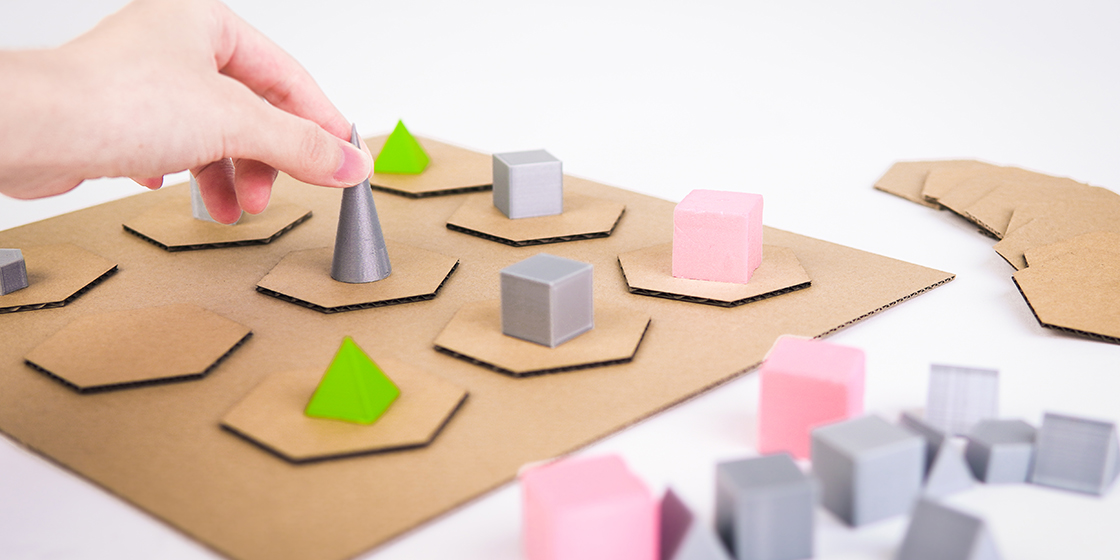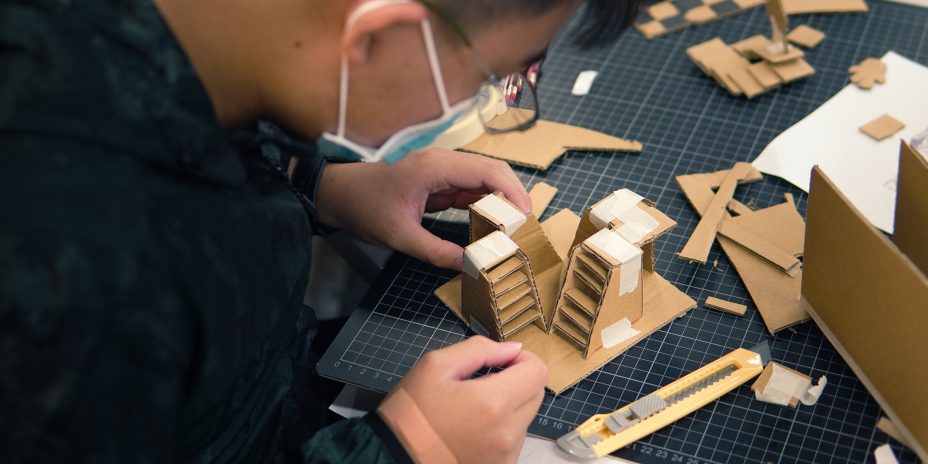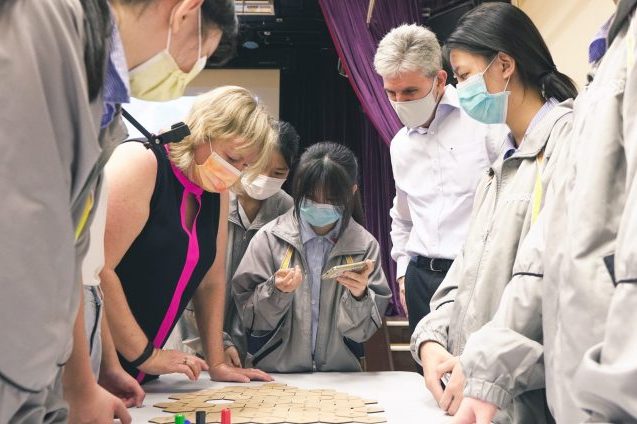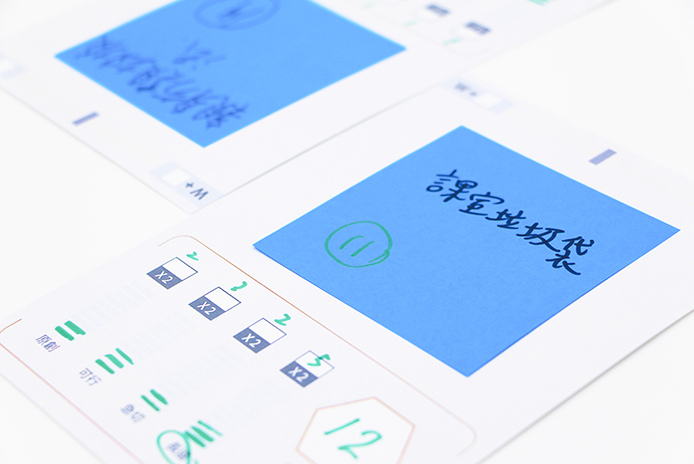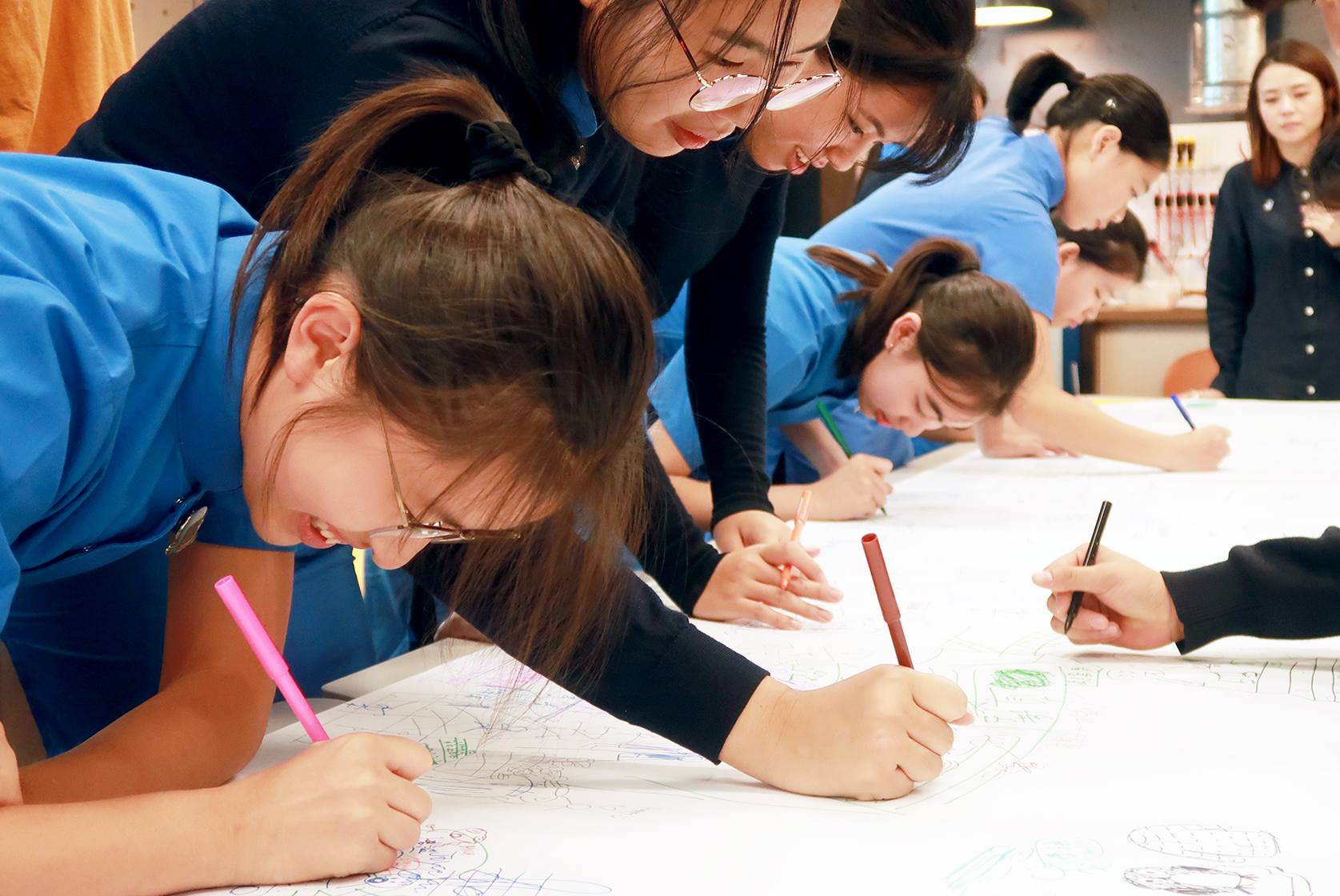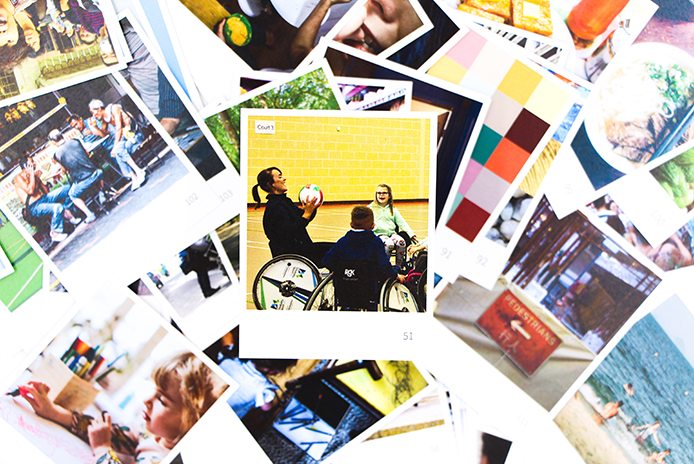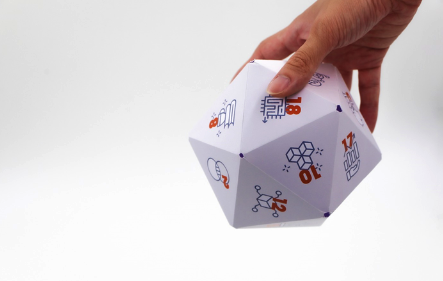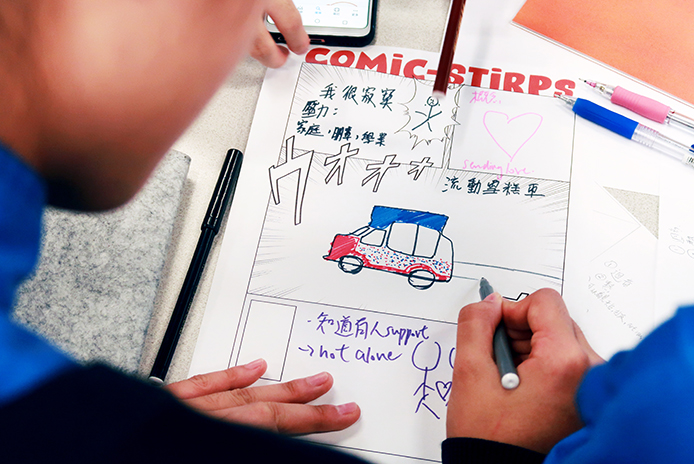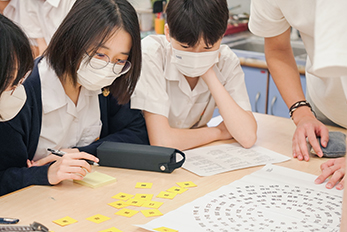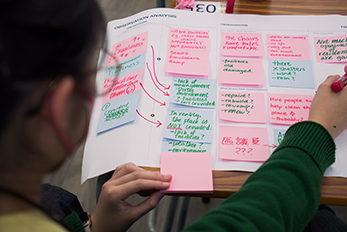WHAT is it?
The game kits contains a range of plain components for a board game. It is very reasonable for students to develop games as end results of their project, but this is difficult to do from scratch. By comparing and testing, this kit helps students create their own games.
WHY use it?
Some critics have suggested that instead of learning through games, al lowing students to maker games might achieve much better results. Through imaging a game world and coming up with rules for the games, students can gain a much deeper understanding of the knowledge acquired, as they have to transfer if into a very different context.
HOW to do it?
Arrange the students into groups of 4–6 (this suggestion is for a taster-like 3-hour session, but the whole process could be expanded to a 3–5 lesson project with the same steps).
▸ Introducing the challenge (15mins)
Explain the goal of the session and the several steps that the students will go through.
▸ Comparing (20mins)
Ask the students to choose several games or a genre of game that they would like to use as a basis.
Ask them to analyse why the chosen games are fun for them and also to analyse the mechanics of these games.
Ask them to think this through in detail; for example:
How does the game proceed?
Is it just luck or is there skill or strategy?
Ask them to put down the principles into the blank cards provided in the kit.
▸ Prototyping (60mins)
Making use of the components in the kit, lead the students to play out a preliminary form of the game.
First ask them to develop a minimal version; the easiest way is to start with a game involving only 2 players that would end within 5 – 10 moves. It is then up to the students to decide on the game mechanics (for which they can make use of the attached template and the rules cards in the kit, along with the cards they wrote in the comparingstage). Lead them to address the questions they asked in the analysis stage, but this time in relation to their own game; for example:
How many players should there be?
How is the game won/ended?
How long does a round take? Is it now too fast or too slow?
▸ Rule-making (20mins)
Decide and write down the rules of the game; some references from real games can be provided to help students write the rules.
▸ Testing (25mins)
Ask the groups to exchange games. The playing groups have the role of playing the game and providing feedback; they should also try to find ways to cheat.
The groups then finalise their games according to the feedback and any unexpected gameplay and events that arose during the test.
▸ Playtime! Debriefing and discussion (40mins)
It is strongly suggested to invite students from other classes that know nothing about the project to play the games. The invited students can also cast their votes for the best game at the end.




